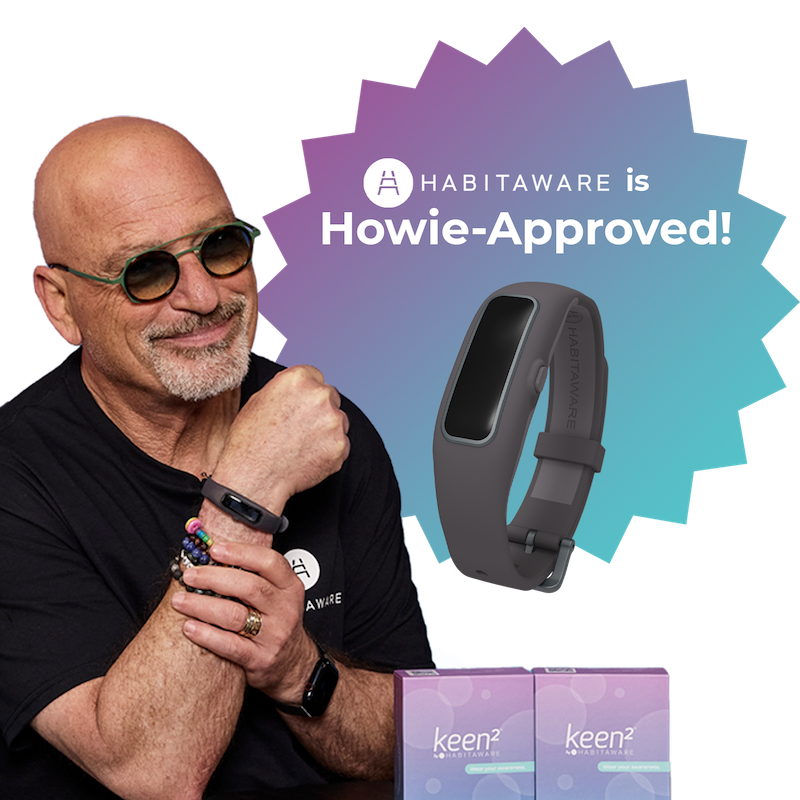This blog was written by Samyuktha Gopi Raj, who you can also find on instagram at inspire.art28
"Neurons that fire together, wire together." – Donald Hebb
What are BFRBs?
Body-Focused Repetitive Behaviors (BFRBs)—hair pulling, skin picking, or nail biting—affect millions worldwide. They are not "bad habits." Instead, they are advanced coping mechanisms associated with stress, arousal, and sensory needs.
BFRBs appear to be automatic, functioning either to decrease overstimulation or add stimulation in times of boredom. This dual purpose can make it incredibly difficult to understand and control urges. .
But here is the good news: with neuroplasticity, you can retrain your brain to develop new patterns that support calm and resilience.
The Brain Science of Habits
Every habit is a stored neural circuit in the brain. Consistent behaviors strengthen these circuits through repetition.
In BFRBs, the pattern usually occurs like this:
Trigger → Stress, tension, or boredom.
Behavior → Pulling, picking, or biting.
Reward → Relief or stimulation.
This loop is reinforced by dopamine, which tells your brain: “This worked—do it again.” That’s why stopping can feel nearly impossible when you don’t know how to replace the pathway.
Why Are BFRBs So Persistent?
Unlike simple habits, BFRBs tie into self-regulation. They calm the nervous system when you’re anxious and provide stimulation when you’re under-aroused.
Stopping a BFRB cold turkey is akin to asking your brain to give up its default coping strategy. The result? A war of wills between you and your brain chemistry.
Rewiring Through Neuroplasticity
Neuroplasticity is the ability of the brain to establish new pathways and abandon old ones. With repetition and reinforcement, you can retrain your brain to replace unhealthy coping mechanisms with healthier self-regulation tactics.
HabitAware's Keen2 leverages this neuroplasticity principle by interrupting BFRB patterns with a gentle buzz or hug on the wrist. This momentary interruption gives the prefrontal cortex—our brain's decision-making center—a chance to engage, creating space between trigger and response. Each pause represents an opportunity to choose a different behavior, gradually building new neural pathways through consistent practice.
Visualize it as a walking path: the longer you walk the new path (supported by Keen2's gentle reminders), the more distinct it becomes, whereas the worn trail (the BFRB pattern) erodes with disuse.
Using the Buzz as Your Mindfulness Cue
When Keen2 gives you a gentle buzz or hug on your wrist, treat this as your moment for transformation. Here's your three powerful strategies to reprogram your pathways
- Strengthens the prefrontal cortex (impulse control).
- Calms the amygdala (stress nucleus).
- Instills awareness of desire without acting on it.
Try it:
Set a 5-minute timer. Sit still, pay attention to your breath, and softly bring your mind back to it whenever it goes astray.
- Engages the parasympathetic nervous system (rest-and-digest).
- Slows heart rate and decreases muscle tension.
- Provides grounding sensory input like BFRBs.
Try it:
Breathe in through your nose for 4, hold for 2, blow out through your mouth for 6. Repeat 3–5 times. Think you’d do well with some audio guidance? Try a guided breathing exercise.
3. Progressive Muscle Relaxation (PMR)
- Loosens underlying tension that has accumulated in the body.
- Makes you more attuned to stress signals.
- Is a tool you can use anywhere, at any time.
Try it:
Tense a group of muscles for 5 seconds, release—starting at your toes and working up to your head. Notice the difference between tightness and relaxation.
Building Your Self-Regulation Toolkit
Think of these exercises as daily repetitions for your brain. The more repetitions you do, the stronger your new neural pathways will be.
Additional helpful strategies include:
- Sensory Substitutes: Fidget toys, gum, or tactile stickers to replace sensory needs.
- Journaling: Track triggers and progress.
- Movement: Exercise brings both stress relief and sensory regulation.
The Emotional Side: Learning Self-Compassion
Shame is prevalent among most people with BFRBs. You pull or pick, feel shame, and the cycle grows stronger. Shame activates the threat system, making urges increase.
Self-compassion, which activates the care system, releases oxytocin and calms the nervous system.
Try reframing your inner language:
"This urge is a cue, not a failure."
"Practice requires progress."
"My brain can change."
What Progress Looks Like
Rewiring isn't a straight climb—it's a zigzag path. You may observe:
- Desires gradually fade.
- Slips recover faster.
- Substitutes feel like second nature after a while.
Reward small wins, like pausing before a craving or choosing a substitute even once. Each moment reinforces your new route.
When to Seek Help
When self-help tools are not enough, you should seek help from a professional.
Evidence-based treatments are:
- Cognitive Behavioral Therapy (CBT)
- Acceptance and Commitment Therapy (ACT)
- Comprehensive Behavioral Treatment (ComB)
Specialists in treating BFRBs can tailor techniques for your triggers. Peer Community (like The HabitAware Collective) also provides encouragement, guidance, and support.
A Daily Practice to Recondition
Here is one sample exercise:
- Morning: 5 minutes mindfulness meditation.
- Noon: 3 deep breathing repetitions.
- Evening: 10 minutes progressive muscle relaxation.
Whenever Urge Arises: Pause → Notice → Competing response (for example, stretch).
Last Takeaway
BFRBs aren't a weakness—your brain's attempt at self-regulation. But the course your brain followed isn't serving you anymore.
Using mindfulness, breath, relaxation, and compassion, you can learn to let go again.
Each breath, each pause, each mindful choice is a step toward rewiring your circuits and reclaiming calm.
🎯 Ready to Transform Your BFRB Journey?
Remember: With HabitAware each buzz is your moment of power - an opportunity to strengthen new neural pathways and create lasting change. The more you practice responding mindfully to these gentle reminders, the stronger your new habits become.
Get your Keen2 bracelet or download KeenLite from the App Store to begin your path to recovery with gentle awareness training backed by expert support and our caring community.
References
Hebb, D. O. (1949). The Organization of Behavior: A Neuropsychological Theory. Wiley.
UCLA Health. (2023). Building new habits involves the development of new neural pathways
Odlaug, B. L., & Grant, J. E. (2010). Clinical characteristics and medical complications of pathologic skin picking. General Hospital Psychiatry, 32(2), 242–247.
Flessner, C. A., Woods, D. W., Franklin, M. E., Cashin, S. E., & Keuthen, N. J. (2008). Trichotillomania learning histories: A comparison of clinical and nonclinical pulling. Behavior Modification, 32(4), 493–509.
Hölzel, B. K., Lazar, S. W., et al. (2011). Mindfulness practice leads to increases in regional brain gray matter density. Psychiatry Research: Neuroimaging, 191(1), 36–43.
Tang, Y. Y., Holzel, B. K., & Posner, M. I. (2015). The neuroscience of mindfulness meditation. Nature Reviews Neuroscience, 16(4), 213–225.
Kabat-Zinn, J. (1990). Full Catastrophe Living. Delta.
Twohig, M. P., & Woods, D. W. (2001). Habit reversal as a treatment for chronic skin picking: A pilot investigation. Behavior Modification, 25(2), 193–202.
TLC Foundation for BFRBs. (2024). Understanding BFRBs.
Visual Note:
The accompanying artwork - a chocolate-dipped strawberry surrounded by hearts—symbolizes self-love, nourishment, and the gentle process of healing. Just as neural pathways can be reshaped through mindful repetition, the image reflects how care for the mind, body, and soul helps rewire habits with compassion and balance.


